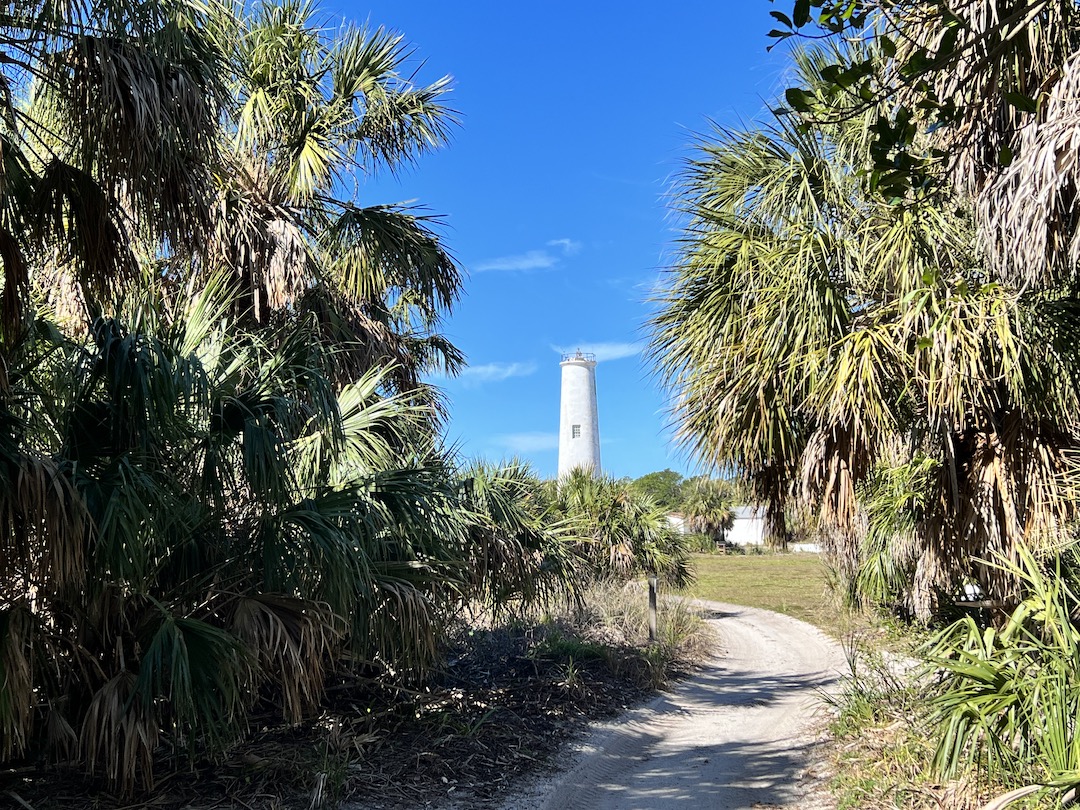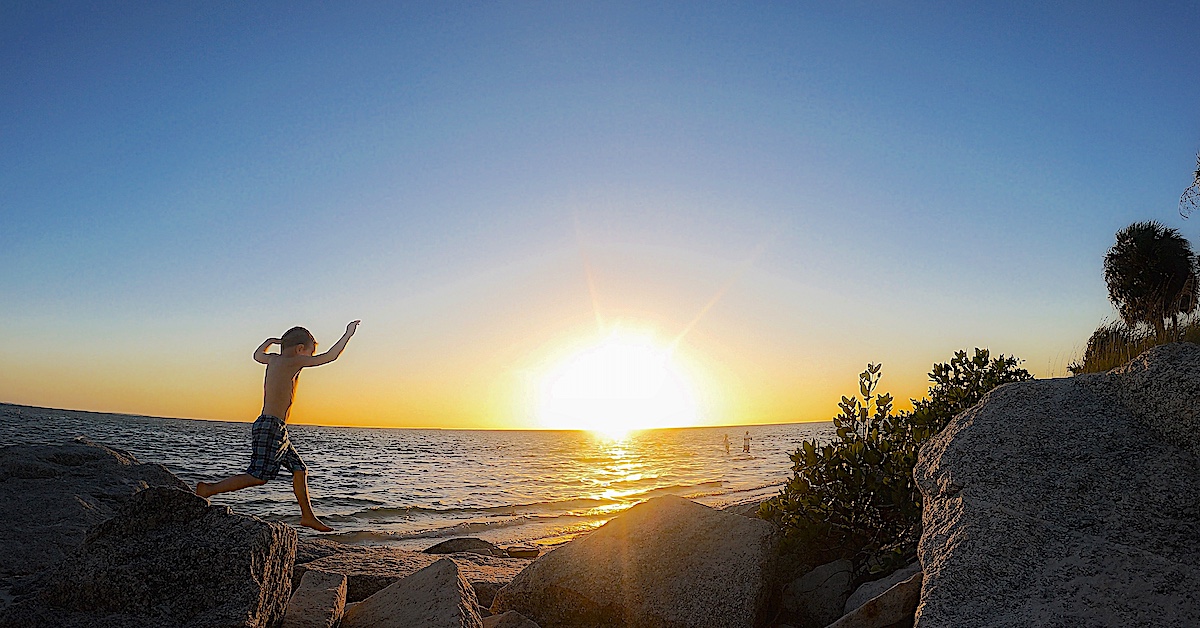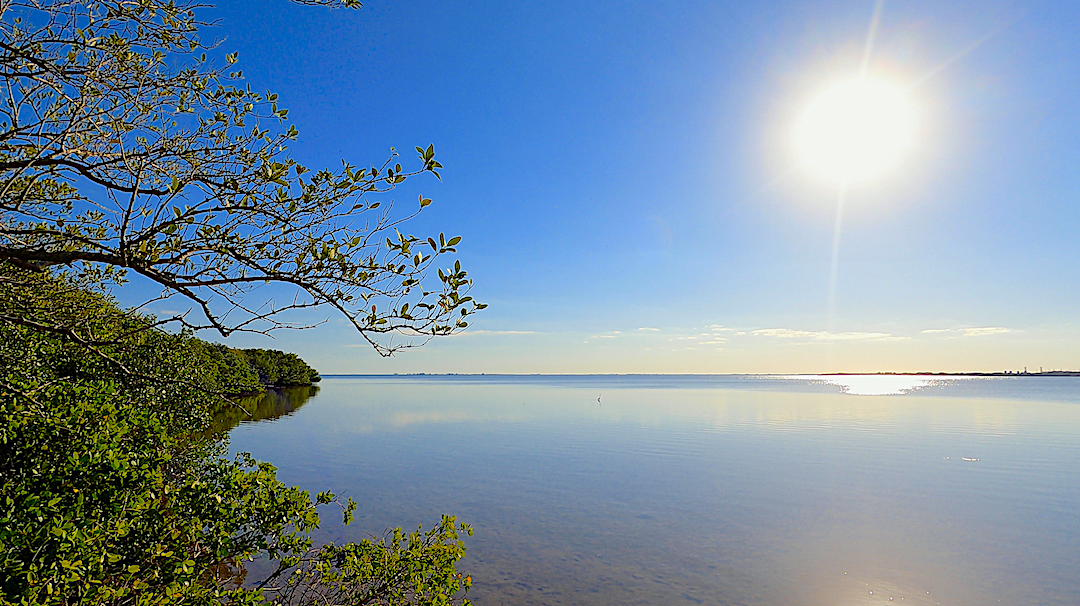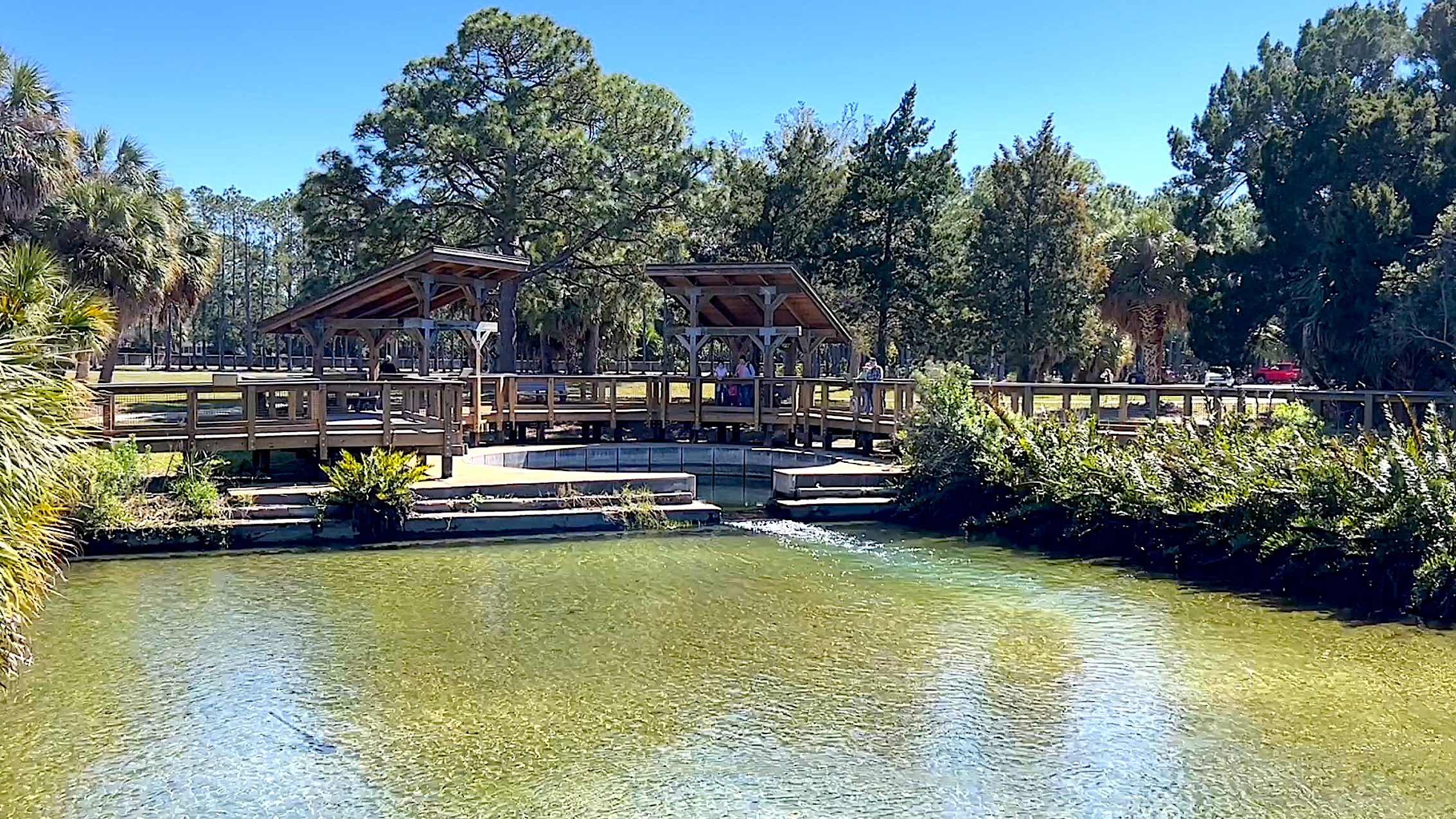I wake up early in the morning, excited for my trip to Egmont Key State Park. I’m accompanied by my wife Susan, who is also looking forward to the adventure. As we pack a travel bag with some essentials– bottled water, sunscreen, snacks, and beach towels– the prospect of exploring this hidden gem of Tampa Bay is exhilarating. We’ve never visited despite living in the area for nearly 40 years.
After a short drive, we arrive at Fort Desoto Park and hop on a boat tour that takes us to the island. We made a reservation the day before. We board the pontoon boat along with around 30 other passengers and take a seat on one of the aluminum benches for the short trip over to the island. As we approach Egmont Key, we are struck by the beauty of the pristine white sand beaches and crystal-clear waters. The boat docks at the island’s pier, and we step off eagerly, ready to start our adventure.



I start by exploring the island’s history, while Susan heads to the beach to search for seashells and shark teeth. I head in the direction of the historic Egmont Key Lighthouse, which was first lit in 1848 and still stands today. I am fascinated by the stories of how the lighthouse helped guide ships safely through Tampa Bay, and the important role it played in Florida’s history. Egmont was a brief home to Seminole Indians defeated in war. During the Civil War, Union and Confederate troops occupied Egmont during the course of several battles.
Historical Photos
(Click Or Press A Photo To View Full Screen)







As I walk on to explore the island’s old fort, I come across a team of Eckerd College students and their professor studying gopher tortoises. They are weighing the tortoises and taking blood samples as part of a learning and conservation project. I observe them working with the tortoises and am impressed by their dedication to the study of these unique creatures and their efforts to help protect them. Egmont Key is a National Wildlife Refuge protecting gopher tortoises, box turtles, nesting birds like the osprey, and several species of seabirds.
Continuing on to Fort Dade and its sprawling gun batteries near the beach front, I pass under towering palms that create a canopy of shade, keeping me cool as I walk over a paved trail. Fort Dade was built to defend Tampa Bay from invasion during the Spanish American War. Between 1898 and 1916, over 70 buildings were constructed, including a hospital, school, theater, and post office. The island had its own infrastructure, such as sewer, electric, and telephone service.



I take a self-guided tour of the fort, walking through the tunnels and peering out at the stunning views of the island and the water beyond. As I make my way through the fort, I am struck by the impressive architecture and engineering of the structure. The fort was strategically designed to withstand attacks and protect the area’s coastline. I am amazed at the thought and planning that went into its construction, and I can’t help but feel a sense of wonder at the history that took place within its walls.
During World War II, Egmont Key was used as a bombing range and was closed to the public. After the war, the island was turned over to the state of Florida and became a state park in 1974. There are also several exhibits located throughout the island that tell the story of Egmont Key’s military history.
While I was exploring the fort, Susan made an amazing discovery on the beach – an enormous shark’s tooth! The other guests nearby were in awe of what she found, and we could see the excitement in her eyes. It was a great moment to share with her and a highlight of our trip to Egmont Key.
We then head out to explore more of the island’s natural beauty. We take a stroll along the beach, and I marvel at the diverse array of wildlife. We see dolphins playing in the distance, and a variety of birds soaring overhead. The island is located at the mouth of Tampa Bay, where the freshwater from the Hillsborough River meets the saltwater of the Gulf of Mexico. This unique blend of freshwater and saltwater creates a rich and diverse environment that supports a wide variety of marine life.







The island’s unique ecosystem is also home to a variety of plant species, including sea oats, sea grapes, and prickly pear cactus.
After several hours of exploration and adventure, we make our way back to the boat for the return trip to the mainland. The entire trip lasted five hours, leaving at 10 a.m. and returning in mid-afternoon. As we reflect on our experience, we can’t help but feel grateful for the amazing opportunity to explore this beautiful and historic island. The island’s pristine beaches are perfect for swimming and sunbathing, and there are several picnic areas located throughout the island where visitors can enjoy a meal or a snack.
Visitors should be aware that there are no facilities on the island, including restrooms and drinking water. So bring your own food, water, and sunscreen, as well as any necessary supplies for any activities.
Egmont Key State Park is a unique and fascinating destination for visitors to the Tampa Bay area. The island’s rich history, environmental significance, and recreational activities make it a must-see destination for anyone interested in the natural beauty of Florida.
Getting to Egmont Key
Visitors to Egmont Key can only access the island by boat. There are several boat tour companies located in the Tampa Bay area that offer tours of the island, including snorkeling and dolphin watching tours. Visitors can also rent their own boat or kayak and explore the island on their own.





